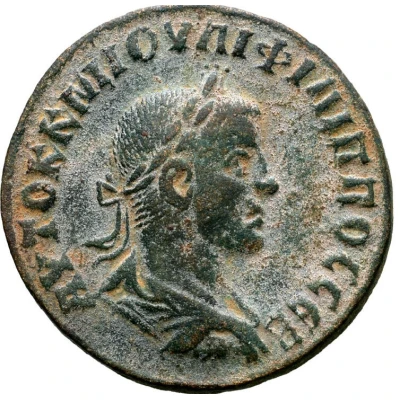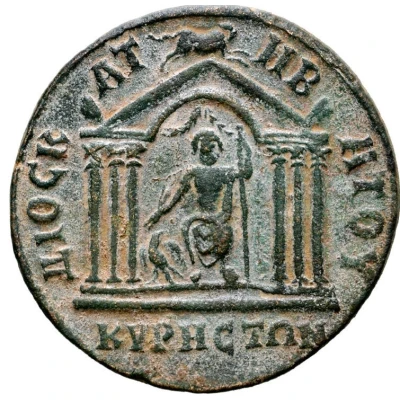


© Roma Numismatics Limited
Æ29 - Philippus II ΔΙΟC ΚΑΤEΒΑΤΟΥ ΚΥΡΗCΤΩΝ; Cyrrhus
| Bronze | 15.36 g | 29 mm |
| Issuer | Cyrrhus (Syria Coele) |
|---|---|
| Emperor | Philip I (Marcus Iulius Philippus) (244-249) |
| Type | Standard circulation coin |
| Years | 244-249 |
| Composition | Bronze |
| Weight | 15.36 g |
| Diameter | 29 mm |
| Shape | Round (irregular) |
| Technique | Hammered |
| Demonetized | Yes |
| Updated | 2024-10-06 |
| Numista | N#267223 |
|---|---|
| Rarity index | 93% |
Reverse
Temple with six columns enclosing Zeus seated l., holding sceptre and thunderbolt, eagle at feet, garlands or curtains above; above temple, bull (?) leaping right.
Script: Greek
Lettering: ΔΙΟC ΚΑΤEΒΑΤΟΥ ΚΥΡΗCΤΩΝ
Interesting fact
One interesting fact about this coin is that it features an image of Philippus II, also known as Philip the Arab, who was a Roman emperor who ruled from 244 to 249 AD. He was born in Syria, and his reign was marked by a series of military campaigns and reforms. The coin's design, which includes the emperor's image and various symbols and inscriptions, provides valuable insight into the cultural and political context of the time. Additionally, the fact that the coin was made of bronze and weighs 15.36 grams suggests that it was a widely circulating coin that was used in everyday transactions, providing a glimpse into the economic and monetary systems of the Roman Empire during this period.